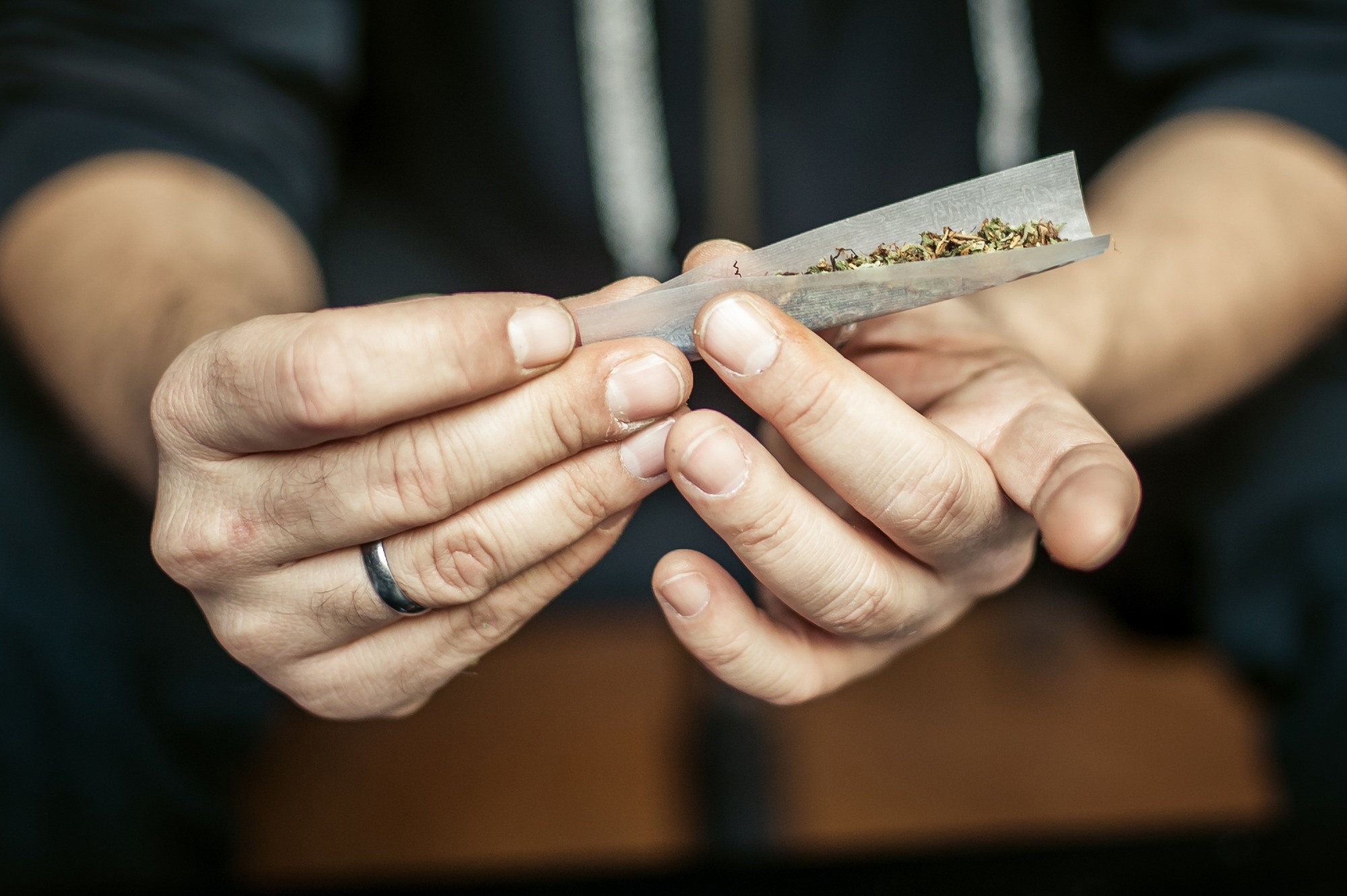In a recent study published in BMC Public Health, researchers investigated cannabis usage motives and their relationship with problematic cannabis use (PCU) risk among young adults.
 Study: Association of self-reported use of cannabis for the purpose of improving physical, mental, and sleep health with problematic cannabis use risk. Image Credit: guruXOX/Shutterstock.com
Study: Association of self-reported use of cannabis for the purpose of improving physical, mental, and sleep health with problematic cannabis use risk. Image Credit: guruXOX/Shutterstock.com
Background
Cannabis usage among young adults is expected to increase due to legalization efforts and cultural acceptance. PCU concerns are likely to increase as the prevalence of users increases. The cannabis product landscape includes combustibles, blunts, vaporizers, and edibles.
Health-associated purposes for cannabis usage include reducing depression, anxiety, pain, and improving sleep. However, data on the efficacy and safety of cannabis usage as a therapeutic agent remains limited.
About the study
In the present study, researchers evaluated the risk of cannabis usage disorders related to cannabis self-medication.
Young adult individuals filled out electronic surveys in partial fulfillment of a study on substance usage among ninth-grade students from public schools in Los Angeles.
Survey enrollment commenced in the fall of 2013, and 3,396 students were surveyed semi-annually. After graduation, individuals were observed every year as young adults.
In 2021, 2,207 individuals provided adequate information on previous six-month cannabis usage, among whom 954 individuals self-documented previous six-month consumption of at least one type of cannabis product, including vaping, dabbing, smoking, blunts, and eating, comprising the final sample population.
Cannabis usage motives investigated included physical health, psychological wellness, and improved sleep.
Problematic cannabis use was evaluated using the 3.0-level Cannabis Abuse Screening Test (CAST-3). Multivariate regression modeling was performed to estimate usage motives related to PCU, adjusting for health-related covariates (medication prescriptions for pain relief, psychological or emotional conditions, or improved sleep) and sociodemographic covariates (age, sex, race, and ethnicity).
Physical well-being motives included cannabis use to reduce nausea, chronic pain, or physical issues.
Mental well-being motives included cannabis use to help with stress, anxiety, post-traumatic stress disorder (PTSD), and depression.
Sleep well-being motives included cannabis use for sleep disturbances such as insomnia. Individuals consuming cannabis for other reasons, such as recreation, were excluded from the analysis.
Results and discussion
Among 954 individuals, 64% were female, and 55% were Hispanics. Cannabis was most frequently used as combustibles (80%) and vaporizers (70%), followed by edibles (68%), blunts (55%), and concentrated products (39%). Mental wellness was documented as the purpose of use most frequently (73%), followed by sleep improvements (62%) and physical well-being (39%).
PCU risks were low, moderate, and severe for 43%, 21%, and 36% of participants, respectively. The team observed a statistically significant relationship between problematic cannabis use risk and cannabis usage to enhance physical well-being.
Compared to young adult individuals not consuming cannabis to improve physical wellness, individuals who did so showed a two-fold and four-fold higher likelihood of consuming moderate and severe PCU, respectively.
Individuals consuming cannabis for psychological well-being showed a two-fold and three-fold higher likelihood of reporting moderate and severe PCU, respectively, compared to individuals not consuming cannabis for psychological wellness.
Likewise, individuals consuming cannabis to improve sleep showed a two-fold higher likelihood of reporting moderate and severe PCU than individuals not reporting cannabis use for sleep difficulties.
Concerning sociodemographic covariates, females had a 0.6-fold lower likelihood of reporting moderate and severe PCU.
Further, individuals unable to meet their regular expenses showed a three-fold and four-fold higher likelihood of reporting moderate-level and severe problematic cannabis use risks than those with higher socioeconomic status. Similar results were obtained in the sensitivity analysis performed using CAST-2.
The main active constituents of cannabis are cannabidiol (CBD) and THC, which interact to produce the psychotropic and analgesic effects of cannabis. Studies have reported that cannabis used to reduce chronic pain contains up to 9.4% THC, whereas recreational cannabis formulations could contain up to 30% THC.
However, cannabis containing 22% THC has been marketed to lower stress, depression, and pain. Considerable overlapping in promoting, marketing, and using recreational cannabis products for therapeutic applications could contribute to the PCU risk among self-medicated cannabis users.
In addition, cannabis usage for negative reinforcement and as a coping mechanism to regulate negative emotions and increase positive effects such as feelings of happiness or relief could increase PCU risk.
Conclusions
Overall, the study findings showed that cannabis usage increases problematic cannabis usage risk, particularly for physical well-being.
The expanding legalization, lack of regulations, diverse product formulations, and limited impact on long-term pain management contribute to the increased risk of severe PCU among cannabis users.
Further research, including larger sample sizes and objective evaluations, is required to assess longitudinal trends in cannabis usage and inform policies and regulations regarding product design, marketing, and use.
Frequent cannabis use, the availability of cannabis formulations comprising varied THC concentrations, and vaping or smoking as regular administration routes could lead to detrimental health outcomes, including respiratory effects such as bronchial irritation.